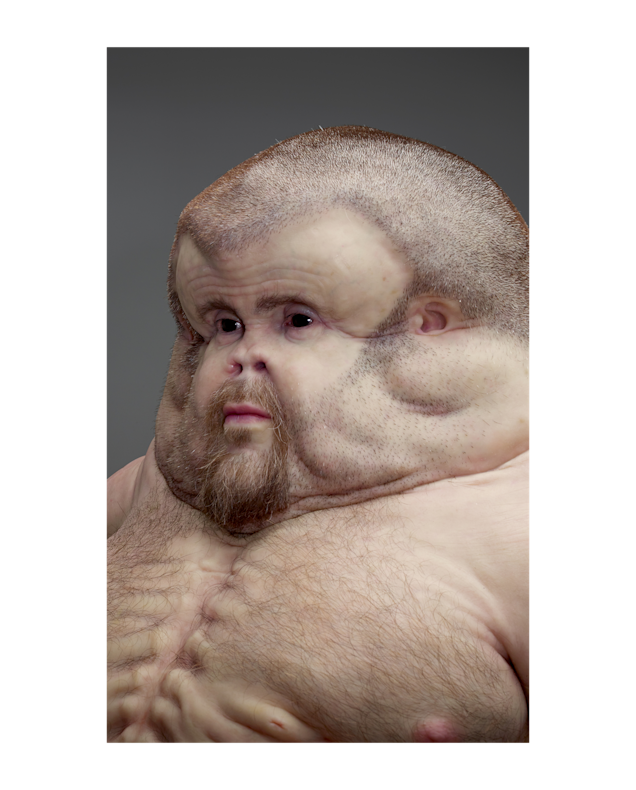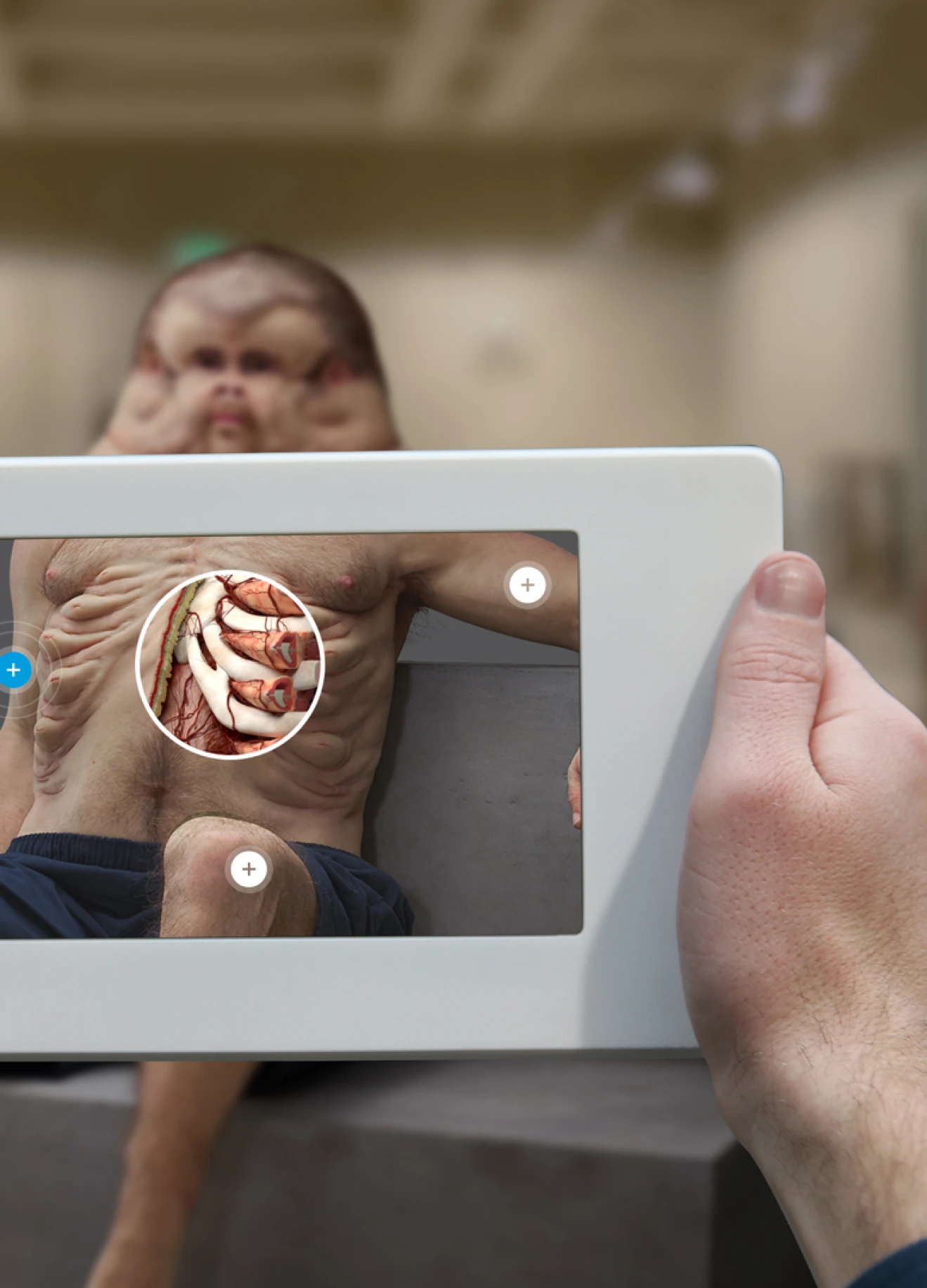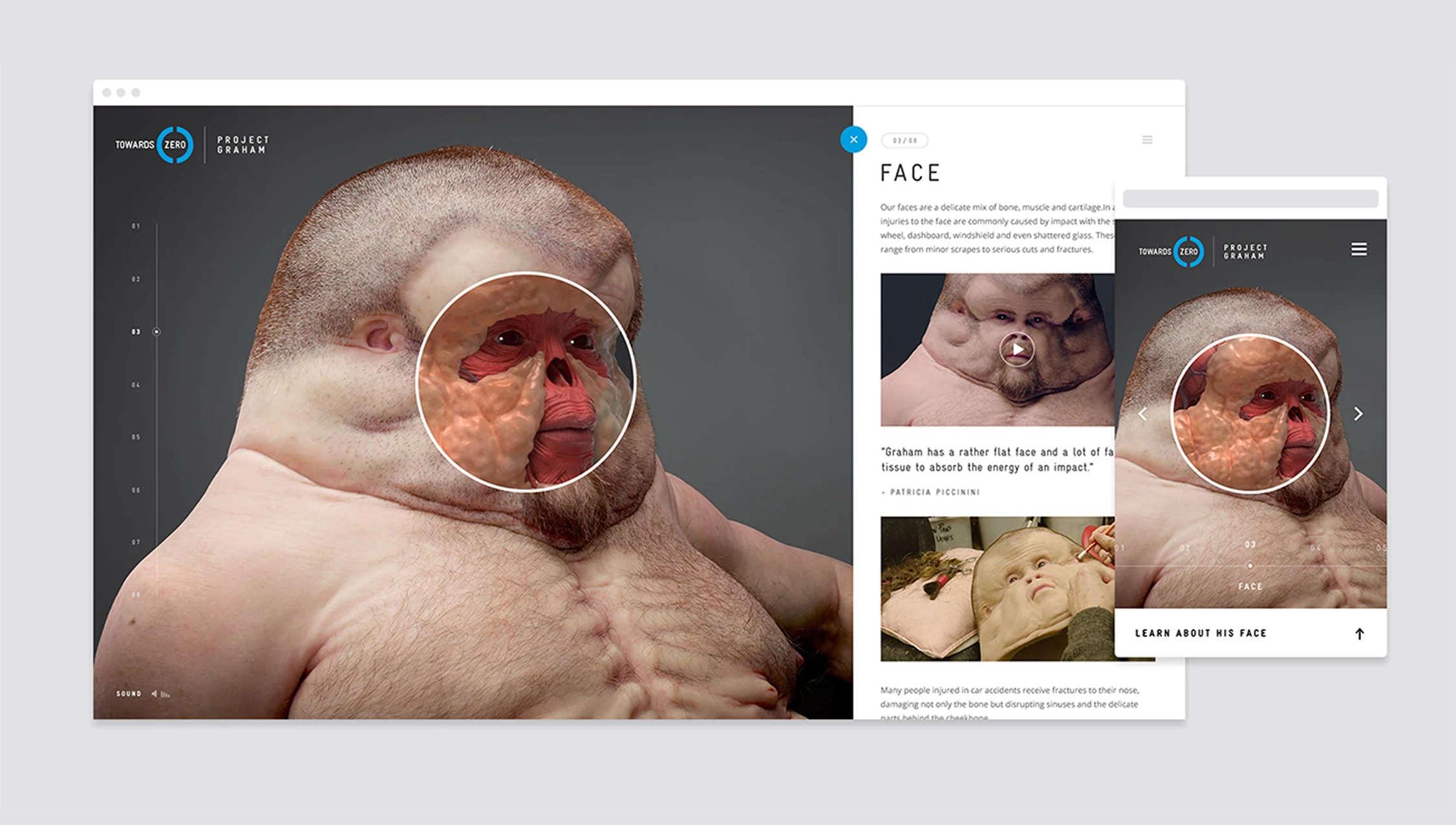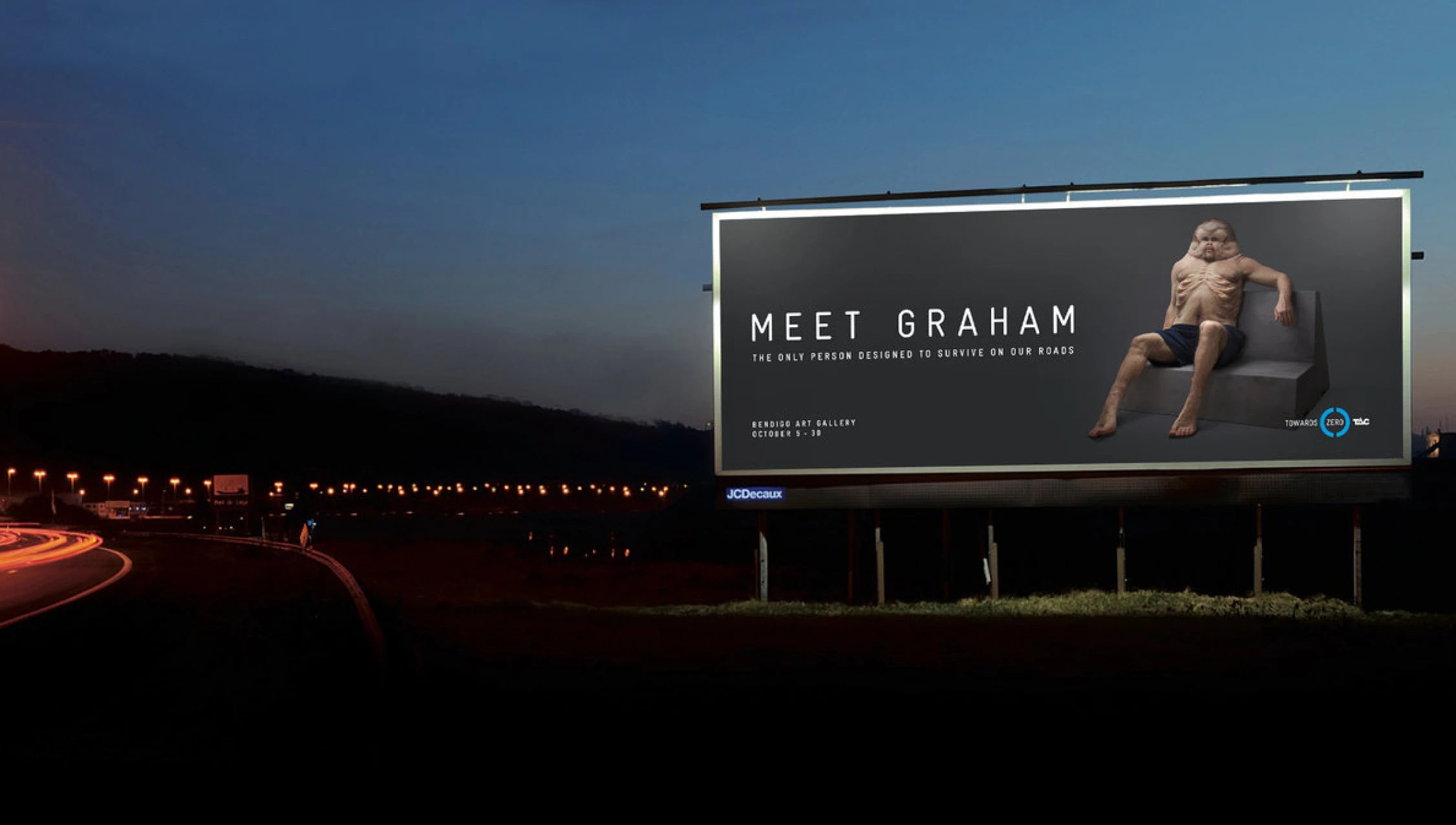
Road safety campaigns faced a critical disconnect—people who considered themselves "safe drivers" ignored traditional messaging and didn't grasp basic crash physics. Years of "shock and gore" advertising had desensitised audiences. We needed to break through and help Victorians understand their vulnerability on roads.
We created the world's first human designed to survive on our roads—a lifelike, interactive sculpture showing how the human body would need to evolve to withstand crash forces. By collaborating with a trauma surgeon, crash investigation expert, and renowned artist Patricia Piccinini, we transformed abstract physics into tangible reality. Graham wasn't just another campaign; he was a scientifically accurate demonstration of human vulnerability.


Graham existed as a physical installation touring galleries across Victoria, his unusual appearance—featuring no neck, reinforced skull, thicker skin, and enhanced thorax—making him both fascinating and unsettling. We leveraged cutting-edge augmented reality through Google Tango allowing visitors to look beneath Graham's skin. Supporting school curriculum enhanced learning, while an interactive website extended reach. Rather than relying on paid media, we let his provocative appearance drive organic conversation.




